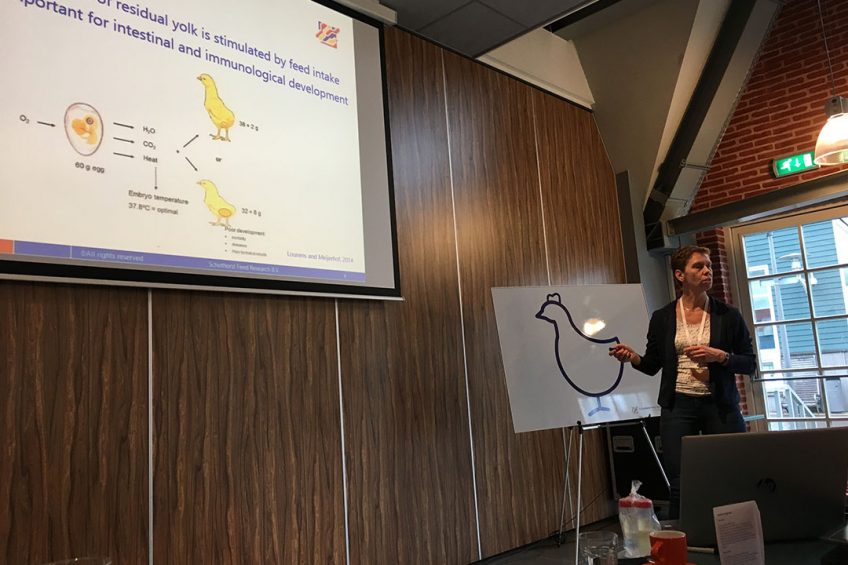Applied nutrition: Hands on experience

During the recently held feeds and nutrition course by Schothorst Feed Research, many aspects of feed formulation were covered. The yearly recurring event is designed to quickly inform the participants about the main theoretical and practical aspects of everything involved in feed production.
The course is comprised of many modules, some more theoretical, some with a more holistic view like gut health and some which are more problem driven like mycotoxins. And of course healthy intestines are very important for good performance of poultry. Nutrition plays an important role in intestinal health. Feedstuff composition, presentation and dietary nutrient content have a great impact on performance of poultry. The effects can differ depending on species, age and production goal. In order to achieve optimal animal performance at the farm, it is of great importance to know the relations between nutrition, animal health and technical performances.
A good feeding programme
Poultry nutritionists need to combine the theoretical knowledge about digestive physiology and biochemistry of feedstuffs to formulate diets. Therefore the goal of nutrition is to provide essential nutrients to the animal for an efficient production, but also to assure animal welfare and health, and a low excretion of non-digested nutrients to the environment. But in the end it comes down to having a good look at the bird and its behaviour.
Trainers Ellen van Eerden and Laura Star, both researchers at Schothorst, delved into the foundations of a good feeding programme. Van Eerden: “It is of great importance to get the freshly hatched birds on the feed as soon as possible. This is crucial for their intestinal development and stimulated yolk absorption.” She continued: “You have to get it right from the start so you can build up on that foundation with feedstuffs that further develop the GIT and also the gizzard.” Her colleague Laura Star puts more emphasis on precision feeding. According to her and her research work, the levels of N and P can be reduced and by doing so the environmental footprint is reduced without having a negative effect on the birds’ health and performance.

Poultry signals
Poultry veterinarian Sible Westendorp connected all the dots between the nutritional ‘status’ of the bird and its behaviour. “The signals the birds give us, provide us with great tools to work with. We only have to learn to see, hear, smell and interpret these signals.” According to Westendorp people often think that feather pecking is a behaviour that happens among birds. “But before birds start pecking at each other, they peck themselves. I always say, that a bird is itching on both the outside and the inside. Feather pecking is often caused by malabsorption and a problem in the intestines.” He continues: “Birds will tell you that by making ‘complaining’ sounds and show it to you with subtle signs.” As an example he pointed to flocks that were healthy at first glance. However, in one house there weren’t any feathers to be found on the floor. “The birds have eaten all the loose feathers, a solid indication that they are missing some nutrients in their diet.” With covering all nutritional requirements, there will hardly be any pecking. ‘’When we stopped debeaking in the Netherlands, we were very afraid of damage due to feather pecking. But with a good focus on feed composition, structure and nutrients, feather pecking never became an issue.”









